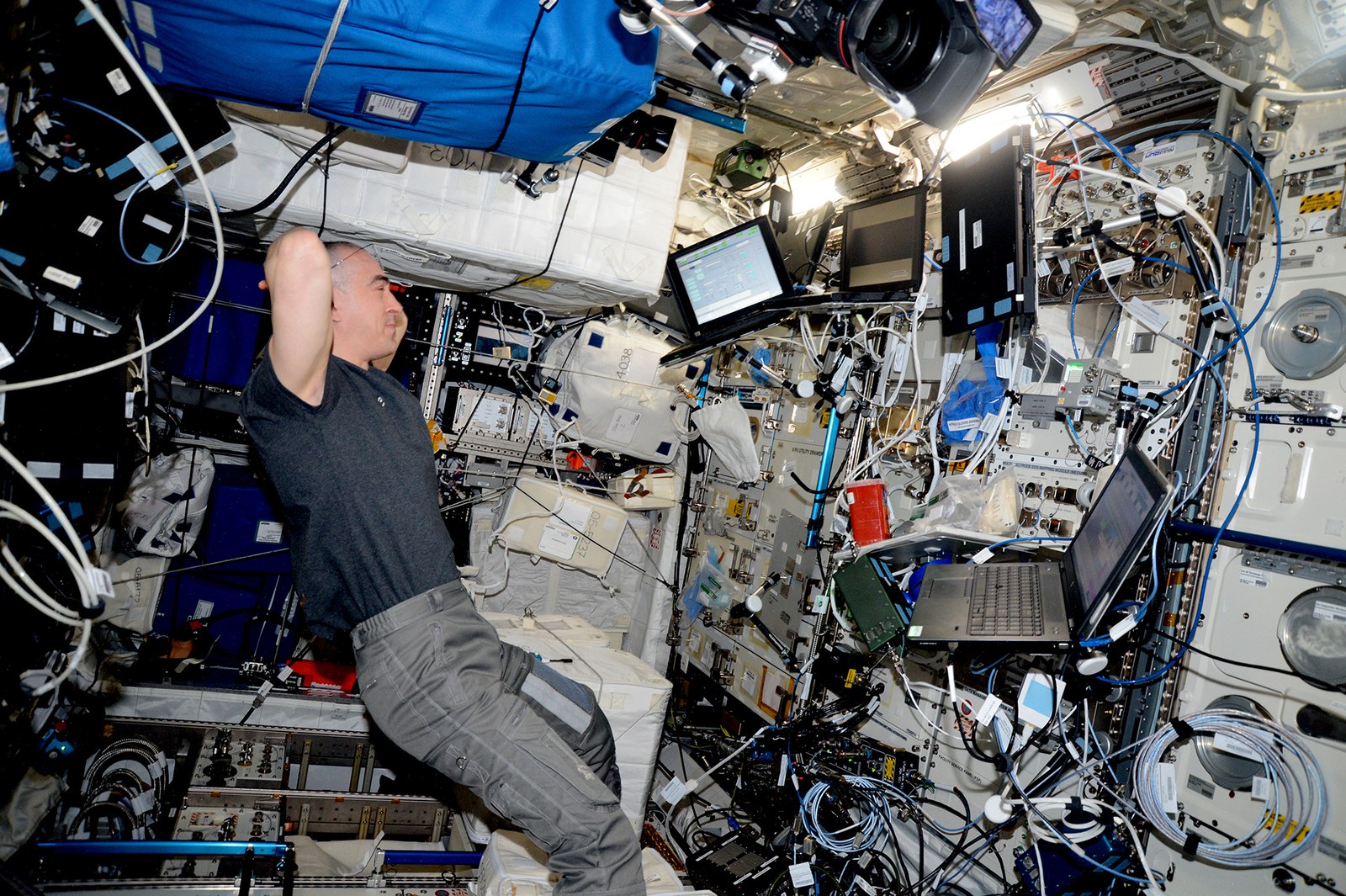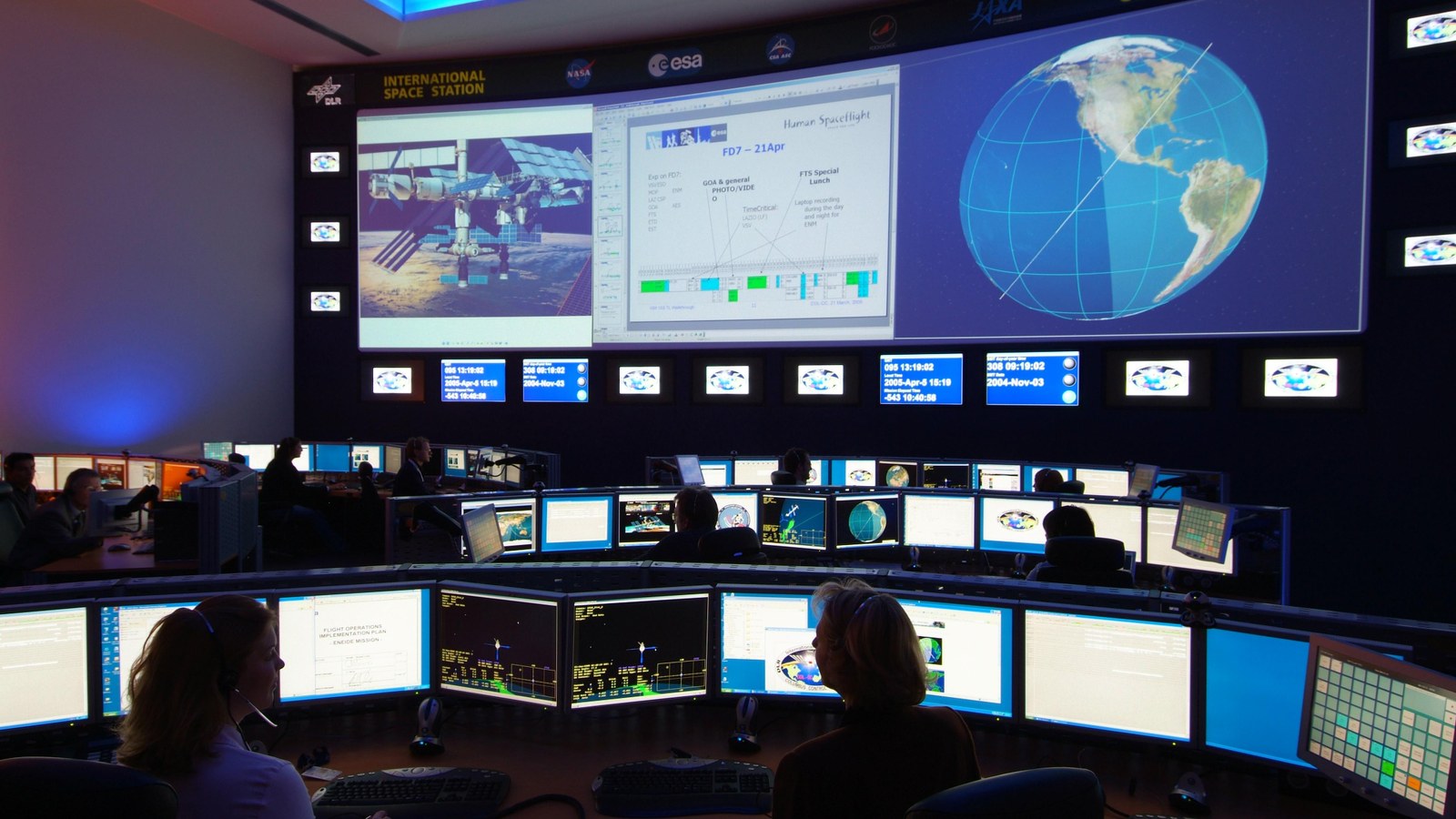Working remotely at the German Space Operations Center – new plasma crystal experiments on the ISS



- Important milestone – successful completion of the 10th measurement campaign with the PK-4 plasma crystal laboratory on the ISS.
- For the first time, the German Space Operations Center has taken over the scientific support of the PK experiments.
- COVID-19 protection measures – DLR scientists from Oberpfaffenhofen maintain contact with the PK-4 Control Centre in Toulouse and the ISS.
- Unique insights using PK-4 – plasma crystals can form in microgravity. The plasma particles behave like atoms and can be observed individually with the naked eye.
- Focus: Space, complex plasmas, ISS
Under normal circumstances, the researchers would have gone to Toulouse, as only from there can they control the PK-4 plasma crystal laboratory, which has been on board the International Space Station (ISS) since 2015. However, the Coronavirus pandemic has made travelling from Oberpfaffenhofen to the CADMOS Control Centre in France impossible. The experiments under microgravity conditions, which had taken months of preparation, were at risk of being cancelled. However, the scientists from the German Aerospace Center (Deutsches Zentrum für Luft- und Raumfahrt; DLR) received nearby support, when their colleagues from the German Space Operations Center, located on the same site, made their resources available and set up a very special kind of 'home office'. The research group from the DLR Institute of Materials Physics in Space has now successfully completed a week-long series of experiments, overseen from Oberpfaffenhofen, while adhering to all of the measures devised to protect against COVID-19. Thanks to specially designed IT and communications channels, they were able to monitor the experiments on their screens and coordinate the process as though they were sitting in the control room in Toulouse. The experiments on board the ISS were carried out by the Russian cosmonaut Anatoli Ivanishin, under the guidance of the plasma researchers.
"The German Space Operations Center in Oberpfaffenhofen was a real piece of luck for us," says Mikhail Pustylnik, PK-4 Project Scientist in the Complex Plasmas research group at the DLR Institute of Materials Physics in Space. "Our colleagues have provided exceptional support in this unusual situation and allowed us to remotely monitor our experiments from Oberpfaffenhofen for the first time. We are very pleased to have been able to maintain continuous video and audio connections with the experiment control centre in Toulouse and cosmonaut Anatoli Ivanishin on board the ISS." This successful collaboration was made possible by both groups' many years of experience. The research group has now carried out their tenth measurement campaign under microgravity conditions, marking a significant milestone. The German Space Operations Center operates the European Columbus Module, so it is familiar with the ESA experiments on board the ISS and the PK-4 laboratory.
Fundamental insights for tomorrow
Plasma is an ionised gas, which makes up approximately 99 percent of the visible material in the Universe. Stars like the Sun are made of plasma. If the conductive gas also contains dust particles or other microparticles, they become highly charged and create a 'complex plasma'. Under microgravity conditions, the particles are able to spread out freely in space and form ordered, three-dimensional crystal structures. These particles behave in a similar way to atoms in a solid or a liquid. The measurements made using the PK-4 plasma crystal laboratory make these processes visible. With each new series of experiments, plasma researchers gain fundamental knowledge that will prove important in the future. A variety of applications may build on their findings, including plasma technologies for microchip production, the medical sector and future space missions.
The flow experiments recently conducted with PK-4 could, for instance, provide a better understanding of the propagation of shock waves. As the ISS crew member tasked with performing these experiments, Ivanishin heated the microparticles with short electrical pulses to reveal how kinetic energy propagates in a shock wave and show the interactions that occur at particle level. The onset and decay of turbulent flows were investigated in several additional experiments.
The experiment team also used lasers to create shear flows in a complex plasma fluid. The measurements build on the results of the previous series of tests and provide information about the viscosity of liquids. Viscosity is one of the most important properties of a liquid, alongside surface tension. In addition, the DLR scientists examined the dynamic structure of plasma crystals. To this end, Ivanishin used a new method to plasm destroy plasma crystals. The cosmonaut switched off the power to the plasma chamber in order to stop the gas discharge, then immediately switched it back on again. The resulting tomographic 3D recording has given the researchers an insight into exactly how plasma crystals melt and then recrystallise when the power is reapplied.
About the project
The PK-4 plasma crystal laboratory is a collaboration between the European Space Agency (ESA) and its Russian counterpart, Roscosmos, under the scientific leadership of the Complex Plasma research group at the DLR Institute of Materials Physics in Space (formerly located at the Max Planck Institute for Extraterrestrial Physics; MPE) and the Joint Institute for High Temperatures of the Russian Academy of Sciences (JIHT RAS). The experimental hardware was developed in-house by the DLR group during their time at MPE, and by OHB System AG (formerly Kayser Threde). PK-4 is funded by ESA and Roscosmos. Additional funding for the project in Germany was provided by the DLR Space Administration and the Max Planck Society.
